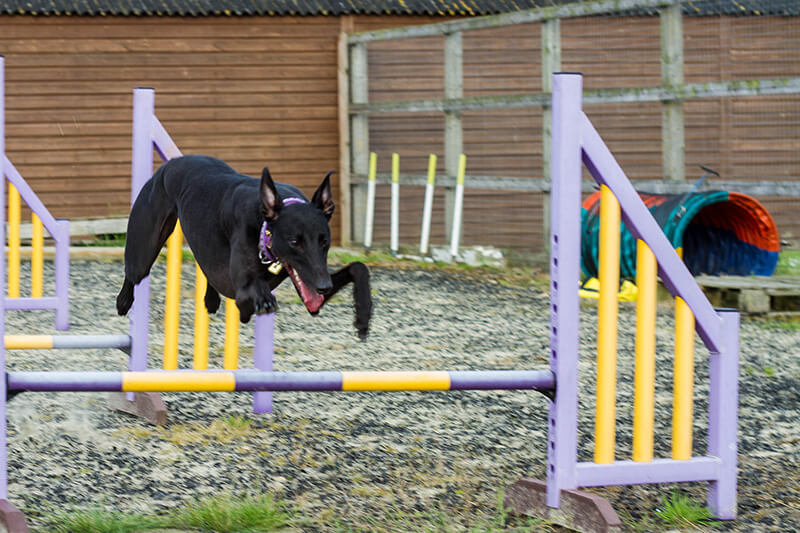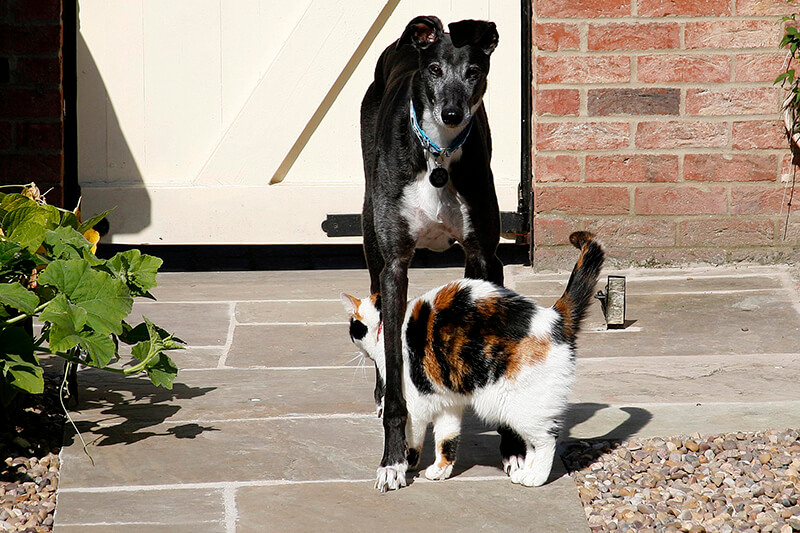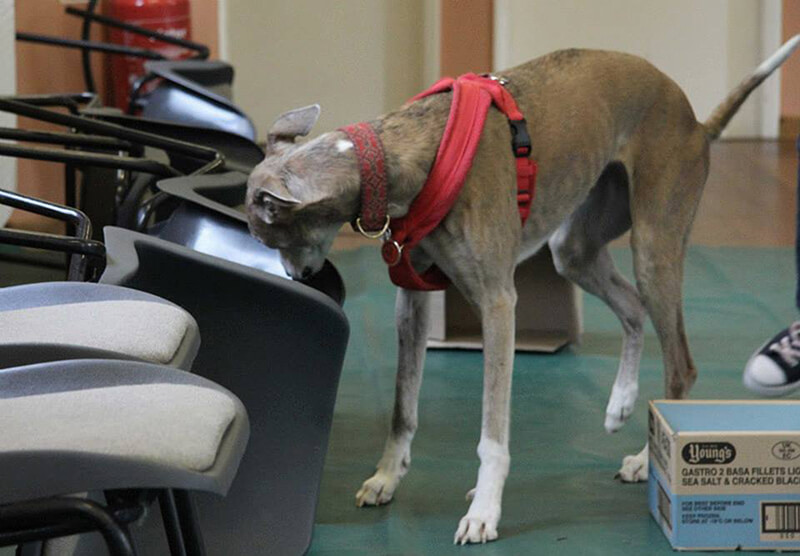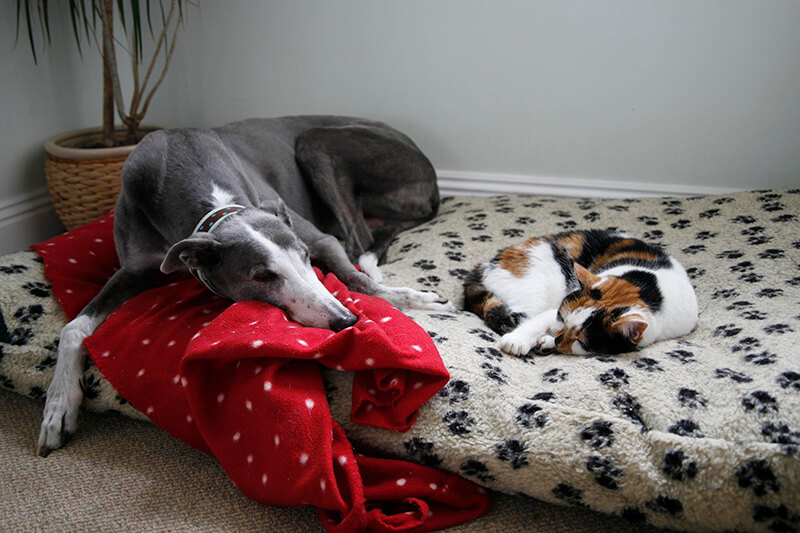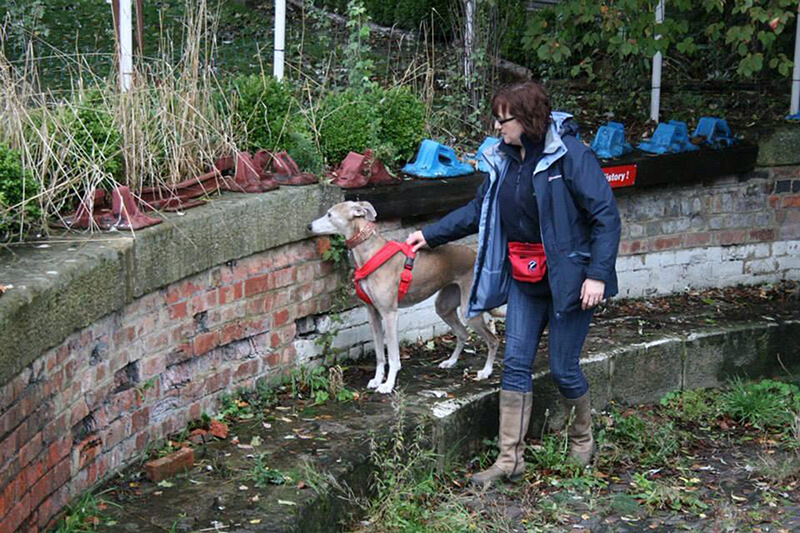Greyhound behaviour
Living & learning with ex-racing greyhounds
I’ve shared my life with these retired canine athletes for the last two decades and I can’t imagine a future without a greyhound (or two) in my life.
It’s fair to say, that since falling in love with my first greyhound, it has become a passion of mine to work with ex-racers helping them adjust to a life post-racing, as well as dispelling the myths that seem to surround the breed.
Life after racing
Firstly, ex-racing greyhounds are a product of their environment. Unlike the pedigree show greyhound, racing greyhounds are bred for fitness, rather than conforming to a breed standard. For most greyhounds, life at racing kennels tends to follow a set and predictable routine. In the UK, most greyhounds are kennelled in pairs and their lives revolve around feeding, grooming, exercise and the days when they race.
Before retirement, most greyhounds won’t have experienced many of the day to day sights, sounds and activities that companion dogs are accustomed to and that we take for granted. It’s fair to say that, in most cases, early socialisation of a racing greyhound isn’t a top priority within a racing environment. For most racing greyhounds their exposure to the world is limited to their racing kennel, paddocks and the track. They have not seen or encountered microwave ovens, TVs, stairs, other breeds of dogs, small animals or children.
For most ex-racing greyhounds, coming into a domestic environment must feel like landing on an alien planet. One day, you’re living in the familiar and the next, you’re transported to an environment where you don’t speak the language, know the customs, understand what’s expected of you and where everything appears alien.
Greyhound behaviour
There are some quirks to greyhound behaviour. Those of us who live with greyhounds will be familiar with the GSOD. This acronym stands for ‘greyhound scream of death’ – once heard, never forgotten! Greyhounds are rather sensitive souls and minor injuries often result in the GSOD, which make you think that they have sustained a life-threatening injury, rather than a minor scratch! That said, however, greyhounds have notoriously thin skin and what could be a minor cut on another breed, can be somewhat more serious on a greyhound.
Other quirks include ‘nitting’ – not quite mouthing, but more like a nibbling behaviour; ‘roaching’ – sleeping on their backs with all their legs in the air; and ‘rooing’ – the greyhound equivalent of a howl! It should also be noted that they are quite happy to spend most of the day snoozing – which is probably how they earned the reputation of being ’45 mph couch potatoes.’
There are also some common behaviour issues which, although not limited to, greyhounds can be more predisposed to. Possibly the two most common are freezing on walks and on-lead reactions to other breeds of dogs.
When you stop to think about it, neither behaviour issue is particularly surprising. For large numbers of greyhounds, socialisation and habituation to everyday life has been limited. It can be easy for owners to misunderstand why their greyhounds behave in a certain way and, all too often, greyhounds are labelled as being ‘stubborn’ or ‘dominant’ (both misused and misunderstood terms when it comes to dog behaviour) and aggressive. It is more likely that the greyhound is scared or worried by something in their immediate environment, and it is the underlying emotion of fear which has caused them to ‘apply the brakes’ or react in an aggressive manner.
Just like any other breed of dog, with appropriate behaviour modification training, most greyhounds can overcome their fears.
Capacity to learn
I will always remember speaking to two different trainers about greyhounds and their responses still astound me to this day. The first was when I rang a local trainer, enquiring about attending their classes. When the trainer asked what breed of dog I had and I replied ‘a greyhound’, they said: “You can’t really teach a greyhound to do anything other than run” – needless to say, I did not join their classes! The second was another trainer I met at a dog-training conference who, when we were chatting about our dogs, said: “Greyhounds? They’re just like big hunks of concrete – you can’t get them to do anything.” To me, these responses underline the huge misconceptions (and, it could be said, ignorance) about life with an ex racing greyhound.
Whilst most greyhounds won’t have been taught any voice cues or basic ‘obedience’ training during their racing careers, that doesn’t mean that they are incapable of learning new behaviours post-racing. Each greyhound is different in the way they learn and in their capabilities (just like us humans). The main challenge with retired racers is that they need to learn ‘how to learn.’ Once you’ve found the switch which turns on their learning abilities, and what motivates them, they can learn and enjoy training – just like any other breed.
All my greyhounds, both past and present, enjoy companion dog training. They respond well to clicker training, fun agility, and trick training. They have also proven to be naturals at scentwork. I’ve enjoyed practising scentwork with all my greyhounds and recently achieved accredited handler status with Talking Dogs Scentwork®, working in partnership with Ava (my young greyhound), making her the first greyhound, in the UK, to complete the Talking Dogs Scentwork® levels. Those ‘needle-noses’ can be put to good use, proving (again) that greyhounds can do more than just run fast.
In a training environment, I have found that most greyhounds won’t do repetition after repetition of a behaviour. Three to five (maximum) repetitions seems to be optimum, after that many ‘switch off.’ It’s also worth remembering that if you’re working on the positions, that cold, hard floors are not conducive to a comfortable training environment for a greyhound. Making use of vet bedding and mats can really help – particularly for teaching a ‘down.’
Adding a greyhound to your home
Upon adopting a greyhound, most people become smitten with the breed and can’t imagine a life without them. To quote an oft used phrase:
“Greyhounds aren’t my whole life, but they make life whole.”
So, if you’ve ever considered offering a greyhound a home, I’d urge you to visit your local greyhound rehoming centre and go and meet some. Be warned though, greyhounds are addictive and one is often not enough!
This is an abridged version of an article I wrote for the Pet Professional Guild publication – Barks from the Guild – published in March 2017.


